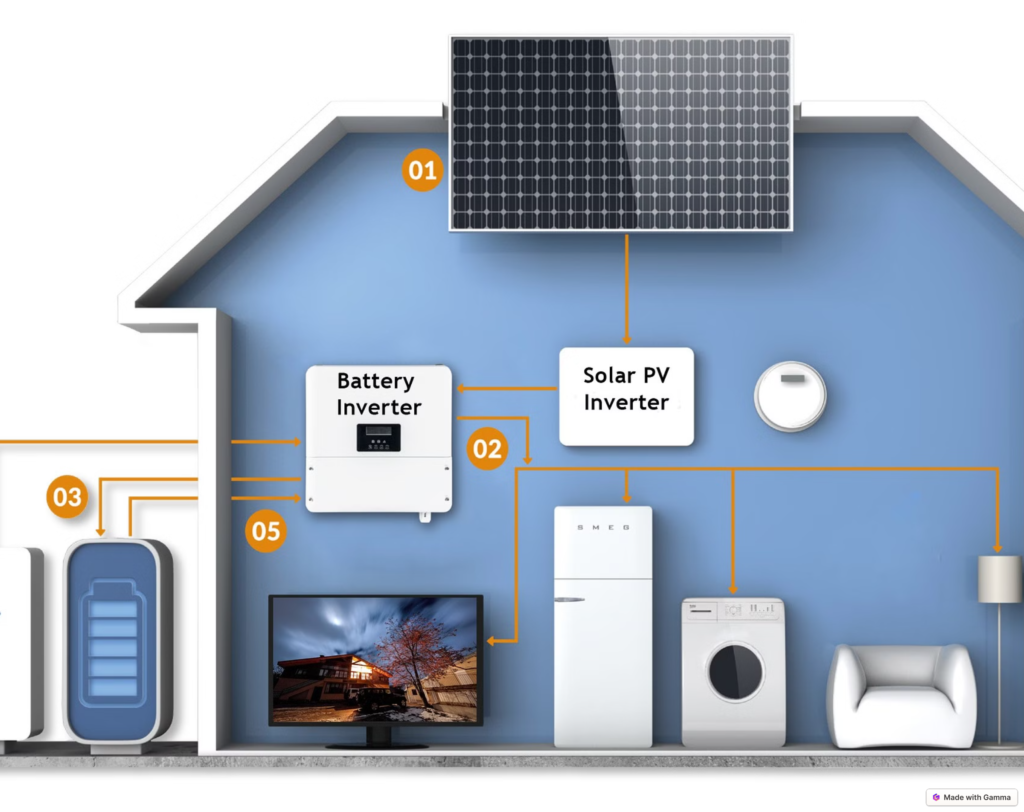Critical Considerations for Managing Charge and Discharge in Solar Panel Systems
Battery Chemistry and Compatibility with Solar Input
Matching Battery Type to Solar Panel Output
Solar panels generate variable DC voltage and current, which must align with the battery’s charging requirements. Lead-acid batteries (e.g., flooded, AGM, gel) typically require a bulk charging phase at 14.2–14.8V, followed by absorption and float stages. Lithium-ion batteries, however, demand precise voltage control (e.g., 3.6–3.7V per cell) and temperature-compensated charging to prevent overheating. Ensure the solar system’s voltage range matches the battery’s nominal voltage (e.g., 12V, 24V, or 48V) to avoid inefficiencies or damage.
Handling Mixed Battery Technologies
Combining different battery chemistries (e.g., lead-acid and lithium-ion) in the same system is not recommended due to conflicting charging profiles. If unavoidable, use a battery management system (BMS) with per-bank monitoring to isolate chemistries and adjust charging parameters dynamically. For example, a BMS might prioritize lithium-ion charging during peak solar hours and switch to lead-acid maintenance at lower voltages.
Charge Controller Configuration and Optimization
Selecting Between PWM and MPPT Controllers
Pulse-width modulation (PWM) controllers are cost-effective for small systems but operate efficiently only when the solar panel’s voltage closely matches the battery’s voltage. Maximum power point tracking (MPPT) controllers, by contrast, adjust the panel’s output voltage to extract maximum power under varying conditions (e.g., partial shading, temperature changes). For high-power or variable-light environments, MPPT controllers reduce energy waste by up to 30% compared to PWM models.
Fine-Tuning Charging Stages
Modern charge controllers allow customization of charging stages to extend battery life. For lead-acid batteries, set the absorption phase duration based on the battery’s capacity (e.g., 2–4 hours for a 100Ah battery) and the depth of discharge (DoD). For lithium-ion systems, enable cell balancing to redistribute charge among cells, preventing overvoltage or undervoltage conditions. Adjust temperature compensation settings (e.g., -3mV/°C per cell for lithium-ion) to account for ambient temperature fluctuations.
Discharge Management and Load Prioritization
Setting Depth of Discharge (DoD) Limits
Excessive discharging accelerates battery degradation. For lead-acid batteries, limit DoD to 50% to double the cycle life compared to 80% DoD. Lithium-ion batteries tolerate deeper discharges (e.g., 80–90% DoD) but still benefit from conservative limits (e.g., 70% DoD) in high-cycle applications. Use a BMS or smart inverter to automate DoD restrictions and prevent irreversible damage.
Load Shedding and Critical Load Management
Prioritize essential loads during periods of low solar generation or high battery consumption. For example, in an off-grid home, configure the system to disconnect non-critical appliances (e.g., air conditioning) when battery voltage drops below a predefined threshold (e.g., 11.5V for a 12V system). Implement time-based controls to run heavy loads (e.g., washing machines) during peak solar hours, reducing reliance on stored energy.
Environmental and Operational Safety Measures
Thermal Management for Batteries and Electronics
High temperatures reduce battery efficiency and lifespan. Install batteries in ventilated enclosures with a temperature range of 15–25°C for optimal performance. For outdoor systems, use insulated battery boxes to mitigate extreme cold (e.g., below 0°C), which can slow chemical reactions and reduce capacity. Ensure charge controllers and inverters are rated for the ambient temperature range to prevent thermal throttling or failure.
Overcurrent and Short-Circuit Protection
Use appropriately rated fuses or circuit breakers on both DC and AC sides of the system. For example, a 12V solar array with a maximum current of 20A requires a 25A fuse to handle inrush currents without nuisance tripping. Install surge protectors to divert transient voltage spikes caused by lightning or grid fluctuations, which can damage sensitive electronics like BMS modules or inverters.
Monitoring and Maintenance Practices
Real-Time Data Tracking
Deploy monitoring tools to track battery state of charge (SoC), voltage, current, and temperature. Cloud-based platforms or local displays can alert users to abnormalities (e.g., sudden voltage drops indicating a faulty cell). For lithium-ion systems, monitor individual cell voltages to detect imbalances early.
Periodic Inspection and Calibration
Schedule monthly checks to clean battery terminals and inspect wiring for corrosion or loose connections. Calibrate SoC meters annually to maintain accuracy, as sensor drift can lead to incorrect discharge decisions. For lead-acid batteries, check electrolyte levels (if applicable) and top up with distilled water as needed.
By addressing these parameters—from battery chemistry selection to real-time monitoring—users can optimize solar energy storage, minimize maintenance costs, and ensure system longevity.


